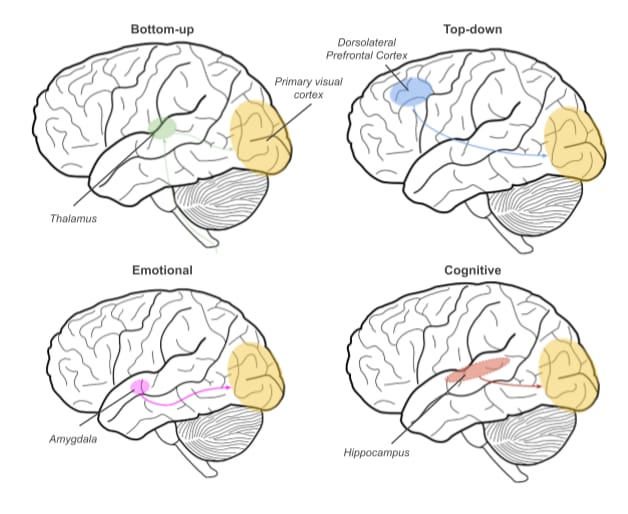Hello dear friend,
As we approach the 765th day of January 😂, I want to encourage you to breathe deeply and exhale slowly every time you recheck the salary date for January 2024.
How has the year been for you at work and at home?
We started this year by looking at work related mental health stress and some strategies for managing these.
Today, we will look at resources that can help employers and employees manage stress at work effectively.
We spend a significant amount of our useful life at work, interacting with colleagues and churning out some of the most creative ideas the world has ever known. Our generation consumes information and an alarming rate, and we also produce at a mind boggling rate.
How is it possible that the brain anatomy of a young person in 1920 and that of mine in 2024 are the same? Neuroscience has made great advancements over the century and perhaps imaging will show some differences between how our brains and theirs look.

The idea of work has changed significantly to a place where we not only serve a purpose, but find community, and harness opportunities for personal growth. The pressure is immense! To look sharp, drive the right car, speak posh, date the right person, be a peak performer at work, in bed and at the gym. Bless you.
No wonder workplace stress is a growing concern for both employees and employers. The fast-paced and demanding nature of modern work environments often leaves individuals feeling overwhelmed and burnt out.
Techniques for Employees
1. Time Management: Effective time management can help alleviate stress in the workplace. Prioritize tasks, set realistic deadlines, and avoid multitasking whenever possible. By staying organized and focused, you can reduce the feeling of being overwhelmed.
2. Active Listening: Actively listening to colleagues, supervisors, and clients can help reduce stress. By paying attention to their needs and concerns, you can better understand their expectations and respond appropriately. Who doesn’t like being listened to.
Subscribe to my Newsletter
3. Exercise and Nutrition: Taking care of your physical health can positively impact your mental well-being. Regular exercise and healthy eating habits can help reduce stress hormones and promote relaxation. Taking short breaks throughout the day to engage in physical activity can be beneficial. Take a walk during lunch. Step away from the computer every hour. Do regular eye massages to improve circulation around your eyes. Be mindful of your posture when you sit or look at your phone.
4. Time Off: Taking regular breaks from work is essential for stress management. Prioritize your personal life and make time for activities that bring you joy. Improve your sleep hygiene. Poor sleep hygiene is an additional factor that can cause sleep deprivation.
Name 5 activities that give you joy.
To expand on these, add activities that cost money and then those that are free. Eg travelling, spending time with family etc.
The important thing is to actually commit to doing one of these every day of the week until it comes fast to do without thinking too much of it.
What can your employer do to help?
1. Workplace Culture: Foster a positive and inclusive workplace culture. Encourage open communication, value employee input, and provide opportunities for growth and development. A supportive environment can help reduce stress levels and increase productivity. There is research that states when people feel safe to fail, they take more risks and more risks mean you gain more innovation and get ahead of competitors. Create a culture without conflict, blame or shame, and watch people thrive.
2. Flexible Scheduling: Offer flexible working hours and work-life balance policies. This allows employees to balance their work responsibilities with their personal life, reducing stress and increasing job satisfaction.
3. Training and Support: Provide training and resources for stress management. Offer workshops or seminars on stress management techniques, such as mindfulness, time management, and work-life balance. Nothing says an employer cares more than investing in an employee.
4. Employee Assistance Programs (EAPs): Establish an employee assistance program (EAP) to provide confidential support for employees facing work-related or personal issues. EAPs offer counseling, stress-management resources, and referral services to employees in need.
Some helpful things to try out and see how you get on:
1. Mindfulness Apps: There are several mindfulness apps that people can download free on their smartphones or tablets. These apps provide guided meditation exercises, breathing techniques, and mindfulness exercises that can help reduce stress and promote relaxation. Some examples are Breathing, calm, headspace, genius.
- The Mindfulness App
- Simple Habit: Meditation App
- Sleep Cycle: Sleep Tracker
- Wysa: Anxiety, therapy chatbot
- Headspace: Learn to Meditate
2. Stress Management Books and Resources: Explore various books, articles, and online resources on stress management techniques. These resources can provide valuable insights and practical advice on managing workplace stress effectively.
- Five Minute Meditation: Mindfulness, Stress Relief, and Focus for Absolute Beginners
- Conquer Your Morning : Declutter Your Day, Prepare For Success, Make Small Changes And Get Big Results
- Mental Health Support Guide – Mind Of Makus
- Stress Relief Techniques for Every Type of Stress
- The Stress Management Handbook: A Practical Guide to Staying Calm, Keeping Cool, and Avoiding Blow-Ups
3. Counseling and Therapy: If workplace stress becomes overwhelming, consider seeking professional help. Seek out licensed therapists or counsellors who specialize in stress management and provide confidential support.
Building safe and supportive relationships with people around you, is vital to creating your own thrive zone.
Personalize your work space make it comfortable for yourself with small things like a picture, a scent, a plant, the colour of your pen? You can do something, no matter how small
[Get this: list of therapist you can contact in the UK, Nigeria and US]
4. Workplace Stress Surveys: Conduct workplace stress surveys to gather feedback from employees. These surveys can provide valuable insights into stress levels, the root causes of stress, and areas where employers can implement changes to alleviate stress.
5. Workplace Stress Management Programs: Develop and implement workplace stress management programs tailored to your organization’s needs. Practical leaflets in visible spaces, knowledge of mental health first aid skills, with key people known to all, should there be an emergency. Training leaders to be vulnerable and share their mental health struggles and incorporation of positive work culture into daily practice.
6. Mental Health Resources: Provide employees with access to mental health resources, such as Employee Assistance Programs (EAPs), mental health helplines, and online resources dedicated to mental health.
In conclusion, workplace stress management is crucial for both the well-being of employees and the success of organizations. By incorporating effective techniques and providing appropriate resources, both employers and employees can create a less stressful work environment.
Remember to prioritize self-care, effective communication, and a supportive work environment to reduce stress and enhance productivity.
Till next time, stay wholesome.
Stay authentic
Be yourself and keep getting better at it.
Live wholeheartedly,
Amaka


